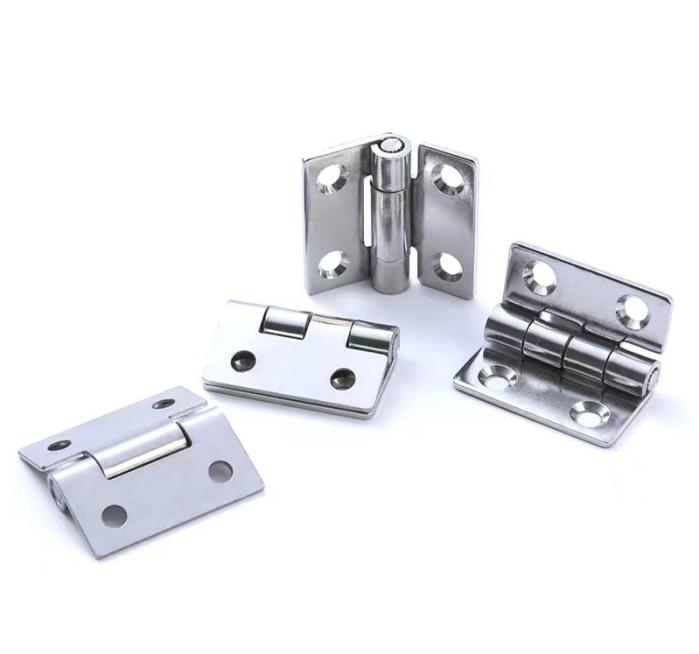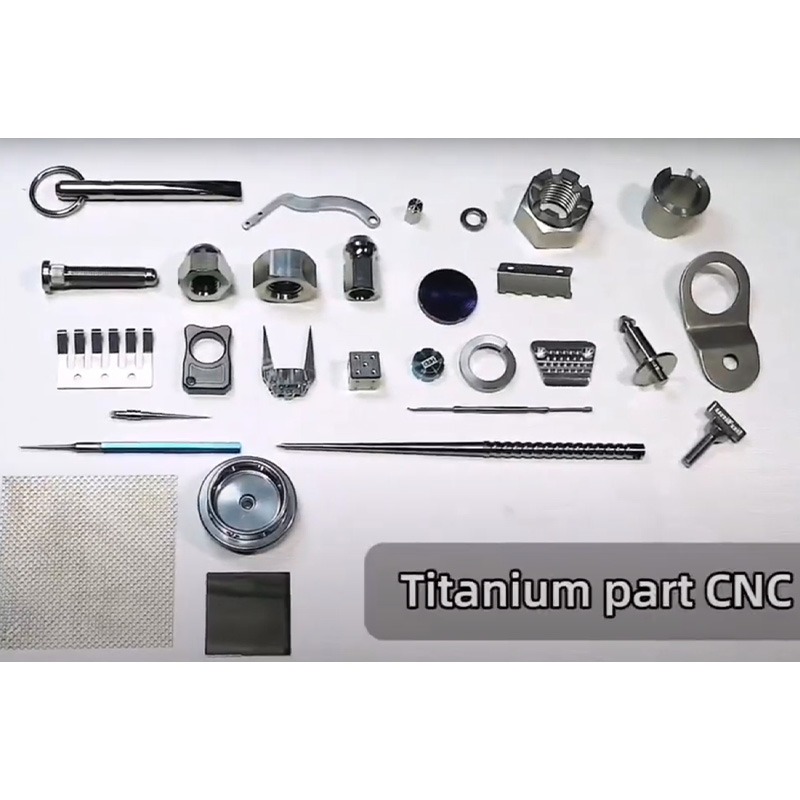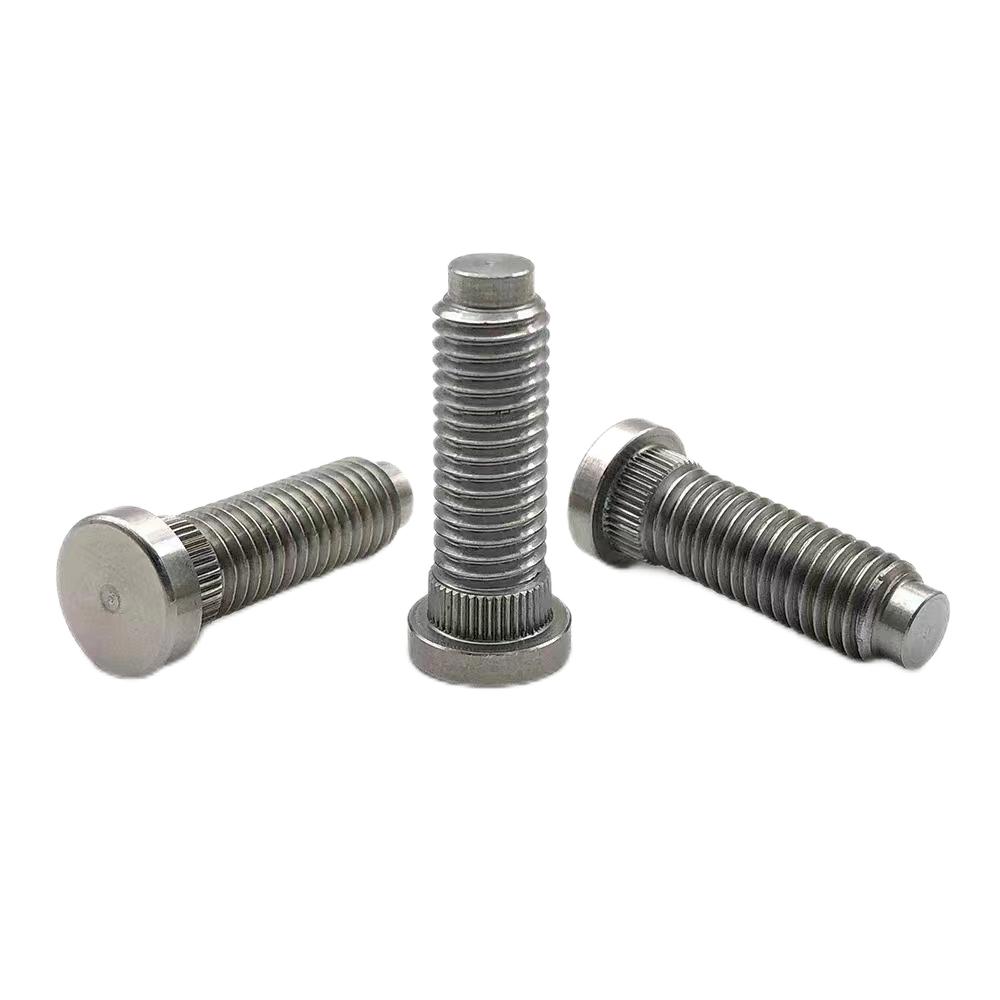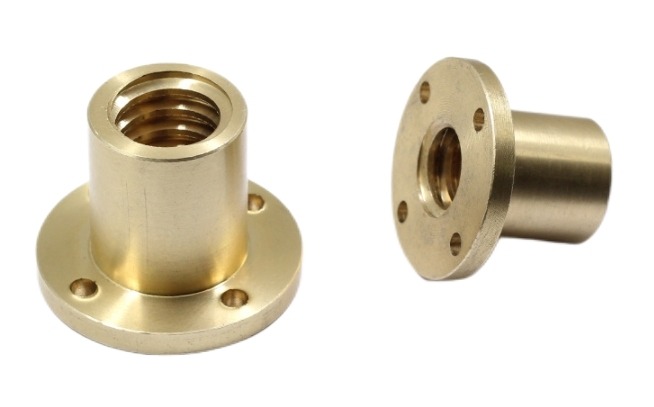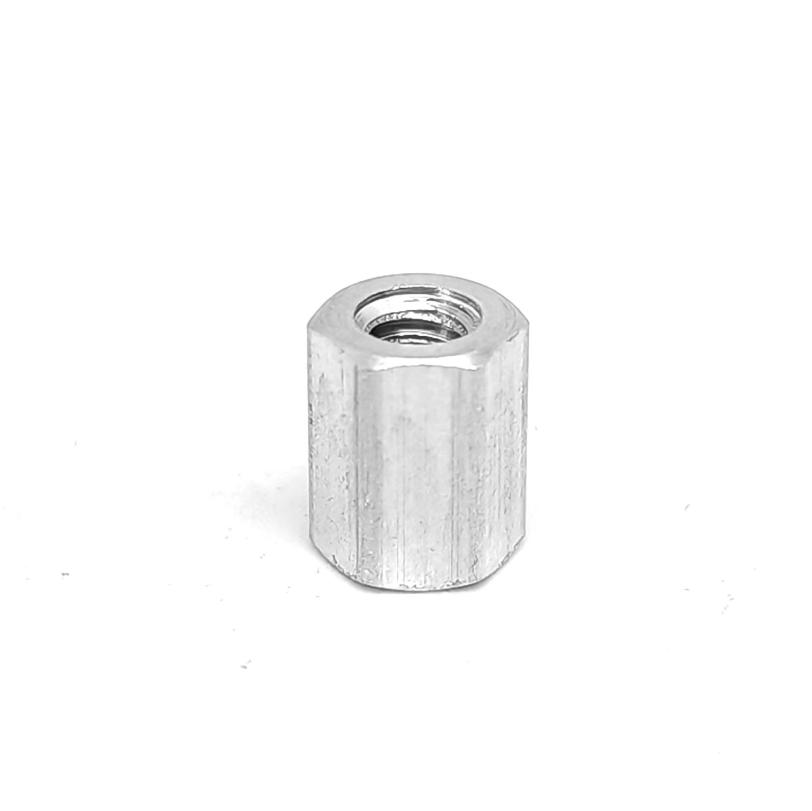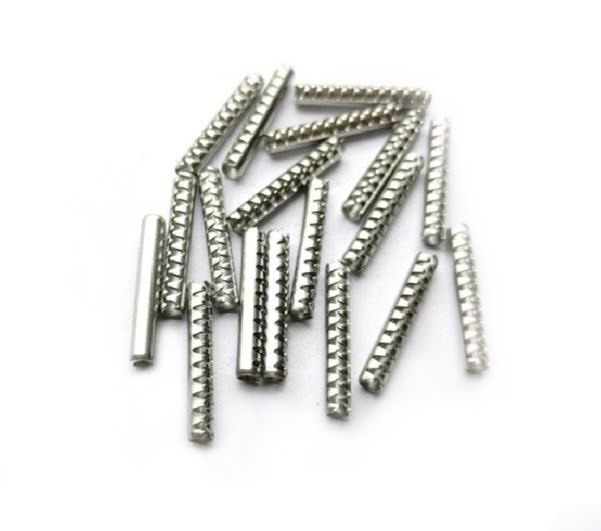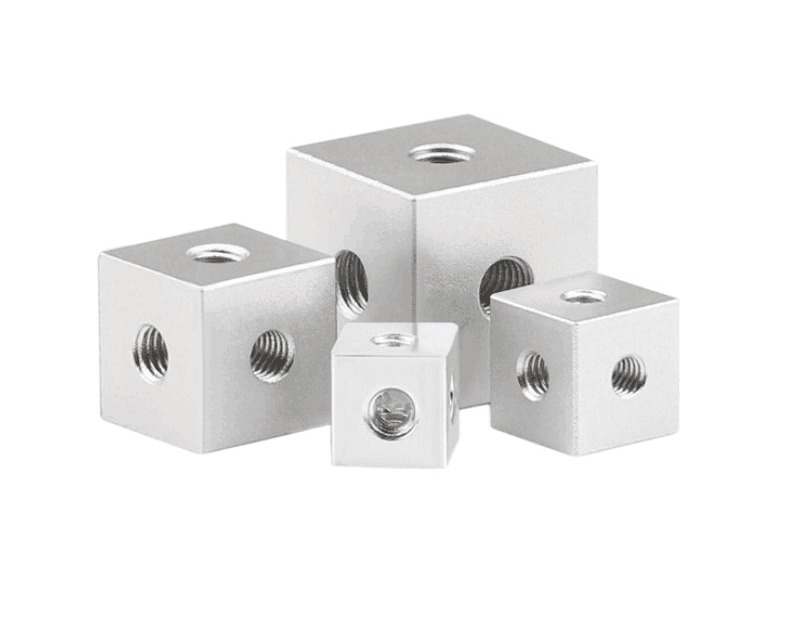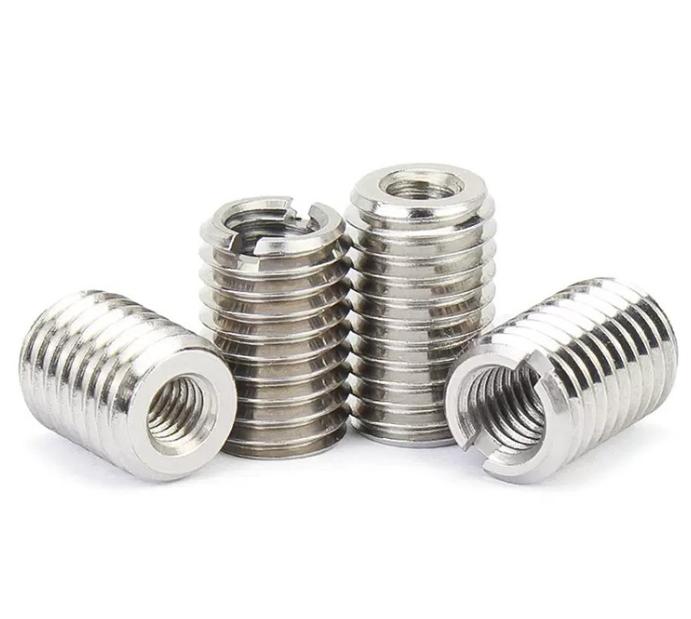What Kind of Components are Produced by 5-axis CNC Machining
The world of manufacturing is a realm of constant evolution, where innovative technologies push the boundaries of what’s possible. Among these advancements, 5-axis CNC machining stands as a testament to human ingenuity, capable of crafting intricate components with unparalleled precision and efficiency. But what exactly are the fruits of this technological prowess? What kind of components emerge from the whirring spindles and meticulously programmed paths of 5-axis CNC machines?
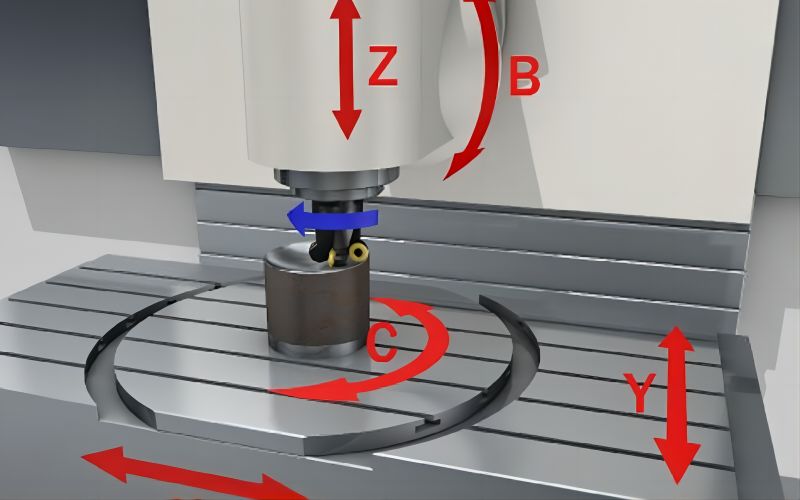
Advantages of 5-axis CNC Machining for Component Production
1. Enhanced Precision and Accuracy: The additional A and B axes in 5-axis machines introduce unparalleled control over toolpath trajectories compared to 3-axis machines. This translates to several advantages for component production:
- Intricate Shaping and Undercuts: The ability to tilt and rotate the workpiece on multiple planes allows the cutting tool to reach previously inaccessible areas. This opens the door to machining complex features like undercuts, cavities, and intricate profiles with superior dimensional accuracy and surface finish. This is crucial for applications demanding tight tolerances, such as medical implants, aerospace components, and high-precision instruments.
- Minimized Tool Deflection: In 3-axis machining, tool deflection can occur when engaged in deep cuts or intricate geometries due to unsupported tool extensions. 5-axis machines can shorten tool engagement lengths by tilting and rotating the workpiece closer to the tool, minimizing deflection and ensuring consistent machining precision regardless of feature complexity.
2. Reduced Need for Fixtures: Complex multi-axis machining eliminates the need for elaborate fixturing setups that hold the workpiece in specific orientations for tool access. This translates to several benefits:
- Time Savings: Fixture design, fabrication, and setup involve significant time investment. 5-axis machining bypasses these steps, leading to faster lead times and improved production throughput.
- Reduced Costs: Eliminating fixturing reduces material and manufacturing costs associated with their design and fabrication. Additionally, setup time savings translate to lower labor costs.
- Improved Accessibility: Complex fixturing can obstruct tool access to certain areas, limiting achievable geometries. 5-axis machining overcomes this limitation, allowing for unrestricted toolpath movement and the creation of previously restricted features.
3. Increased Efficiency and Speed: By enabling multi-sided machining in single setups, 5-axis machines significantly reduce production times for complex components:
- Minimized Feature Machining Steps: Instead of requiring multiple setups and reorientations for 3-axis machining, 5-axis machines can complete features from multiple sides in a single setup. This reduces tool changes, part handling, and machine idle time, significantly increasing production efficiency.
- Optimized Toolpath Planning: Advanced CAM software allows for optimized toolpath generation that leverages the full capabilities of 5-axis machines. This minimizes tool travel distances, reduces machining time, and optimizes cycle times for complex components.
4. Wider Material Compatibility: Due to its superior control and reduced tool deflection, 5-axis CNC machines can handle a broader range of materials compared to 3-axis machines:
- High-Performance Alloys: Materials like titanium and Inconel, known for their strength and heat resistance but prone to deflection during machining, can be effectively processed on 5-axis machines due to the ability to minimize tool engagement lengths and optimize toolpaths.
- Delicate Materials: Fragile materials like ceramics and certain polymers, susceptible to cracking under high cutting forces, can be machined with greater precision and control on 5-axis machines, minimizing stress and ensuring part integrity.
- Composite Materials: 5-axis machining allows for precise control of toolpath entries and exits, minimizing fiber damage and delamination in composite materials, leading to high-quality components with superior structural integrity.
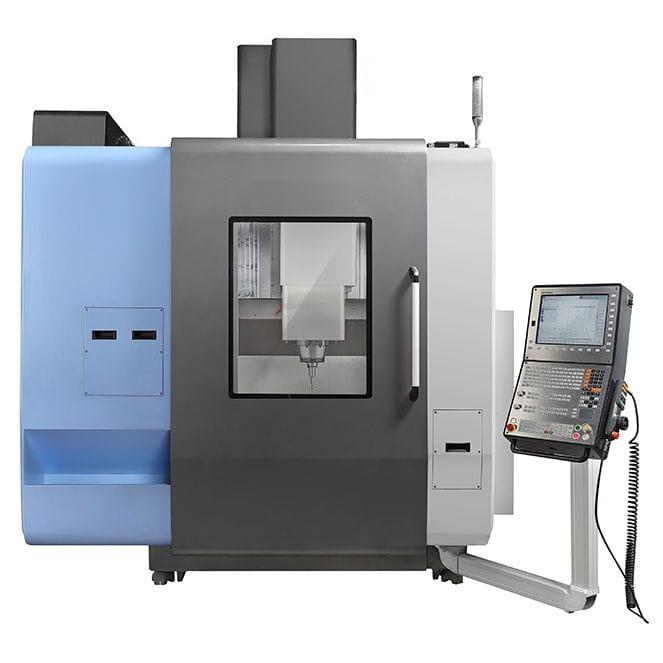
Types of Components Produced by 5-axis CNC Machining
The versatility of 5-axis CNC machining extends beyond specific industries, catering to a diverse range of components requiring high precision, intricate geometries, and superior material compatibility. Here are some prominent examples:
1. Aerospace Components
- Fuselage Sections and Bulkheads: 5-axis machining plays a pivotal role in crafting complex fuselage sections with precise curvature and internal structures. The ability to tilt and rotate the workpiece enables the machining of undercuts, lightning holes, and intricate profiles, contributing to weight optimization and aerodynamic efficiency. High-precision machining ensures structural integrity and dimensional accuracy, crucial for flight safety.
- Landing Gear Components: The demanding performance requirements of landing gear necessitate the use of high-strength materials like titanium and Inconel. 5-axis machining facilitates the creation of intricate landing gear components with superior surface finish and fatigue strength. Optimized toolpath strategies minimize stress concentrations and ensure durability for critical landing gear functions.
2. Medical Devices
- Prosthetic Limbs and Implants: The success of prosthetics and implants hinges on precise geometries and biocompatible materials. 5-axis machining enables the creation of custom-designed prosthetic limbs with accurate bone articulation and intricate surface features for improved functionality and patient comfort. Similarly, medical implants with complex internal channels and delicate features can be meticulously crafted, ensuring optimal tissue integration and surgical fit.
- Surgical Instruments: From delicate scalpels to intricate bone drilling tools, 5-axis machining allows for the production of surgical instruments with unmatched precision and functionality. The ability to access previously unreachable areas facilitates the creation of miniature tools with complex blade geometries and ergonomic handles, optimizing surgeon control and minimizing tissue trauma.
3. Automotive Components
- Engine Parts and Transmission Components: The high-performance demands of modern engines and transmissions necessitate the use of lightweight, high-strength materials like aluminum alloys and magnesium. 5-axis machining facilitates the creation of engine blocks with internal cooling channels and intricate piston pockets, optimizing engine performance and fuel efficiency. Similarly, complex transmission components with precise gear profiles and lightweight designs can be efficiently produced, contributing to vehicle agility and powertrain performance.
- Lightweight Components: 5-axis machining unlocks the potential for weight reduction in automotive components, a crucial factor in fuel efficiency and emissions reduction. By creating intricate honeycomb structures and latticework designs within internal components, 5-axis machining contributes to vehicle weight optimization without compromising structural integrity.
4. Other Industries
- Molds and Dies: From intricate plastic injection molds to complex stamping dies, 5-axis machining enables the creation of high-precision tools for diverse manufacturing processes. The ability to machine complex cavities, cores, and cooling channels facilitates the production of high-quality plastic parts and precision-formed metal components.
- Industrial Machinery Components: From high-precision gears and rollers to complex pump impellers and valve bodies, 5-axis machining caters to the demanding requirements of industrial machinery. The ability to machine tight tolerances and intricate internal features on a variety of materials like steel and hardened composites contributes to enhanced machine performance, reliability, and operational efficiency.
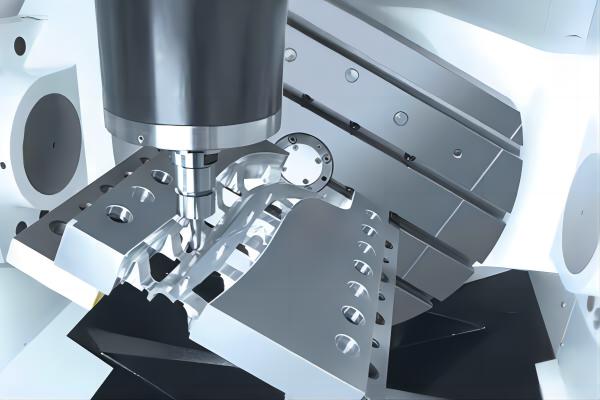
Considerations for Choosing 5-axis CNC Machining
While 5-axis CNC machining offers unparalleled capabilities, carefully assessing its suitability for a specific project is crucial for optimized outcomes. Here are some key considerations:
1. Component Complexity
- Geometric Intricacy: 5-axis machining shines brightest when dealing with highly intricate geometries, undercuts, and internal features that are inaccessible with traditional 3-axis machines. The ability to tilt and rotate the workpiece on multiple axes allows for efficient and precise machining of complex profiles, cavities, and internal structures. For simpler components with straightforward geometries, alternative manufacturing methods might offer better cost-effectiveness.
- Dimensional Accuracy and Surface Finish: When tight tolerances and superior surface finishes are paramount, 5-axis machining excels. The precise control over toolpath trajectories and minimized deflection due to multi-axis machining lead to unmatched dimensional accuracy and superior surface finish, vital for applications like medical implants, aerospace components, and high-precision instruments.
2. Material Requirements
- Material Compatibility: Not all materials are created equal for 5-axis machining. While it boasts wider compatibility compared to 3-axis machines, certain materials like ultra-hard ceramics or brittle polymers might require specialized tooling or techniques due to their susceptibility to cracking or chipping. Consulting with 5-axis machining experts and testing material machinability is crucial for ensuring compatibility and avoiding potential production issues.
- High-Performance Materials: 5-axis machining unlocks the potential of utilizing high-performance materials like titanium and Inconel in complex component designs. The ability to minimize tool engagement lengths and optimize toolpaths reduces stress concentrations and ensures machining feasibility for these challenging materials, opening doors for advanced applications in the aerospace, medical, and automotive industries.
3. Production Volume
- Cost-Effectiveness Analysis: While highly efficient for complex components, 5-axis CNC machines come with higher initial investment and operational costs compared to simpler 3-axis machines. Therefore, a thorough cost-effectiveness analysis is crucial for high-volume production runs. For low-volume production, alternative methods might offer a more economical approach.
- Production Throughput and Lead Times: When rapid production and shorter lead times are essential, 5-axis machining shines due to its ability to complete complex features in single setups and minimize tool changes. This translates to faster production cycles and improved responsiveness to market demands, making it an ideal choice for prototyping, short-run production, and agile manufacturing scenarios.
By carefully considering these factors, manufacturers can make informed decisions on whether 5-axis CNC machining is the optimal solution for their specific needs. Evaluating component complexity, material requirements, and production volume alongside available budget and desired production outcomes will ensure the most cost-effective and efficient approach for crafting high-quality components.
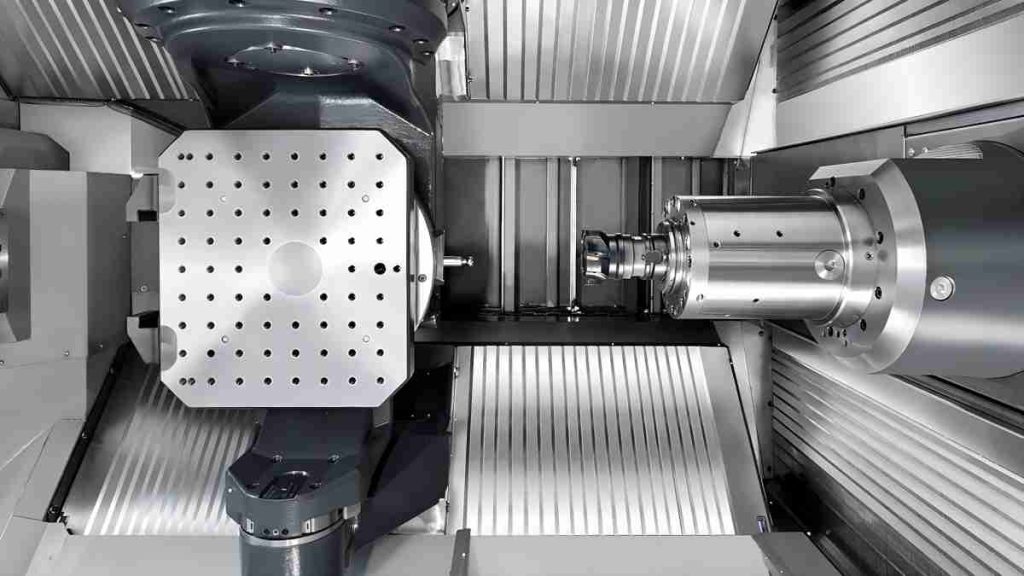
Conclusion
5-axis CNC machining is not just a technological marvel; it’s a symphony of precision, efficiency, and innovation. This technology is shaping the future of various industries, from aerospace and medical to automotive and beyond. As we continue to unlock its potential, we can expect to see even more intricate and groundbreaking components emerge from the whirring spindles of these machines, forever changing the landscape of manufacturing and design. The future, it seems, is bright and intricate, sculpted by the power of five axes.

